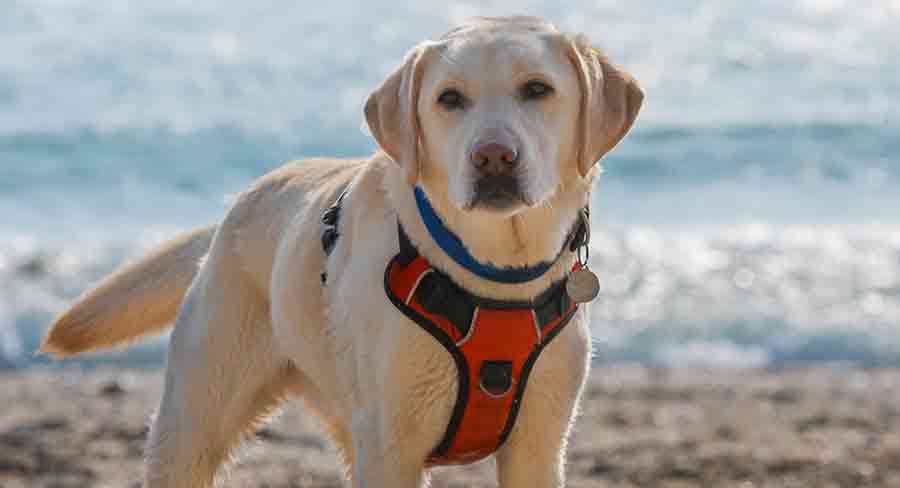Table of Contents
Your Furry Friend Relies on You!
When you adopted your dog, you made a promise to care for them for their whole lives. In return, they enrich yours.
To help keep your promise, consider these 10 ways to help keep your dog healthy.
Provide a Safe Place to Ride in the Car
When you ride in a vehicle, you always use your seat belt. But your dog doesn’t have thumbs and needs your help to stay safe.
Harnesses created for riding in cars click into your existing seat belt latches and help prevent injury should you get into an automotive accident. They also keep your dog securely in the car, so your furry friend is less likely to run away in fear after such a traumatic experience.
Feed a Nutritionally-Balanced Dog Food
Veterinary nutritionists and veterinarians work with reputable dog food manufacturers to develop and produce kibble or canned foods that meet your dog’s unique dietary needs.
Boutique dog food or fad diets may not nourish your dog like you’d think, so always check with your veterinarian before changing your dog’s food because of something you saw on social media or in an ad on TV.
Visit the Veterinarian for Preventative Care
Annual vaccinations, teeth cleaning, and wellness exams are important for keeping your dog healthy and happy. This type of care helps prevent illness, or allows your veterinarian to spot issues before they become major health problems.
Purchase Pet Health Insurance
Dog health insurance works similarly to the way your human health insurance does. You pay a monthly premium in exchange for coverage for veterinarian visits and care. It can save you hundreds of dollars per vet visit, depending on the plan you choose. With care more affordable thanks to reduced cost or reimbursement, you can take better care of your dog.
To find the best pet health insurance for your dog, shop around and compare monthly cost, coverage, deductibles, and annual limits.
Clean Food and Water Bowls Regularly
Plastic and other porous materials that your dog’s food and water bowls are made of can harbor bacteria that make your pet sick. Even solid materials, like stainless steel or ceramic, need to be cleaned regularly.
Pop your pet’s dishes in your dishwasher at least once per week, or wash by hand with hot water and your favorite dish detergent. Be sure to rinse thoroughly before returning them to your pet. If you can wash them every day, it’s even better!
Provide Enrichment and Exercise
Engaging your dog’s mind can help keep your dog happier and healthier. When they’re busy concentrating on a dog-friendly activity, like a puzzle, licky mat, or other cognitive toy, they don’t have time to eat trash, swallow socks, or get into other shenanigans.
And if you have a high-energy dog, brain-engaging activities can wear them out faster than going on a long walk can – although walks and active play are still very important.
Keep Them Clean and Well-Groomed
Your pet doesn’t need a bath every day, but depending on their coat type and skin needs, a weekly or twice-monthly bath is a smart idea to remove dirt build-up from their coat and help you spot any skin problems your pet may be developing.
Even short-haired dogs can benefit from gentle brushing. Your dog also needs a weekly teeth-brushing and frequent nail trimming. If your dog has a low-shedding coat, like a standard poodle or shih tzu, trimming or clipping may also be necessary. A professional groomer can provide this coat care every six to eight weeks, in addition to daily brushing.
Give Flea, Tick, and Heartworm Preventative Medications
Preventative care keeps your dog from getting sick – and flea, tick, and heartworm prevention are important parts of that.
Your veterinarian can prescribe your dog monthly tablets that keep your dog free of pests and dangerous parasites, like heartworms. If your dog becomes infested with fleas, you’ll need an exterminator to treat your home; a heartworm infestation is a major medical problem.
The low cost of preventative medication is much more affordable than their consequences.
Use a Leash When In Unfenced Areas and Where Required By Law
Prevent physical injury by leashing your dog when you’re out on walks or playing at the park. Even if your dog’s recall is perfect, and they’re friendly with humans and other dogs, there’s a good chance they could come into contact with a dog that isn’t so friendly, or a vehicle that just couldn’t stop in time.
Keeping your pet leashed can prevent tragedy.
Watch for Signs Your Dog Doesn’t Feel Well
Dogs are experts at hiding when they feel sick, and they can’t tell you about how they’re feeling, so it’s tricky to know when your dog may need veterinary care.
Common signs that it’s time to call your veterinarian can include:
- Lethargy or lack of energy
- Disinterest in food
- Disinterest in water
- Drinking a lot of water
- New inappropriate elimination in the house (potty accidents)
- Vomiting or changes in stool
- Skin rashes or lesions
- Rapid or difficulty breathing
- Change in heartbeat
- Weepy eyes and runny nose
- Behavioral changes
Your attention can prevent your dog from falling ill, if you catch a problem early on. After all, you’re the only one with thumbs to dial the vet’s phone number.




